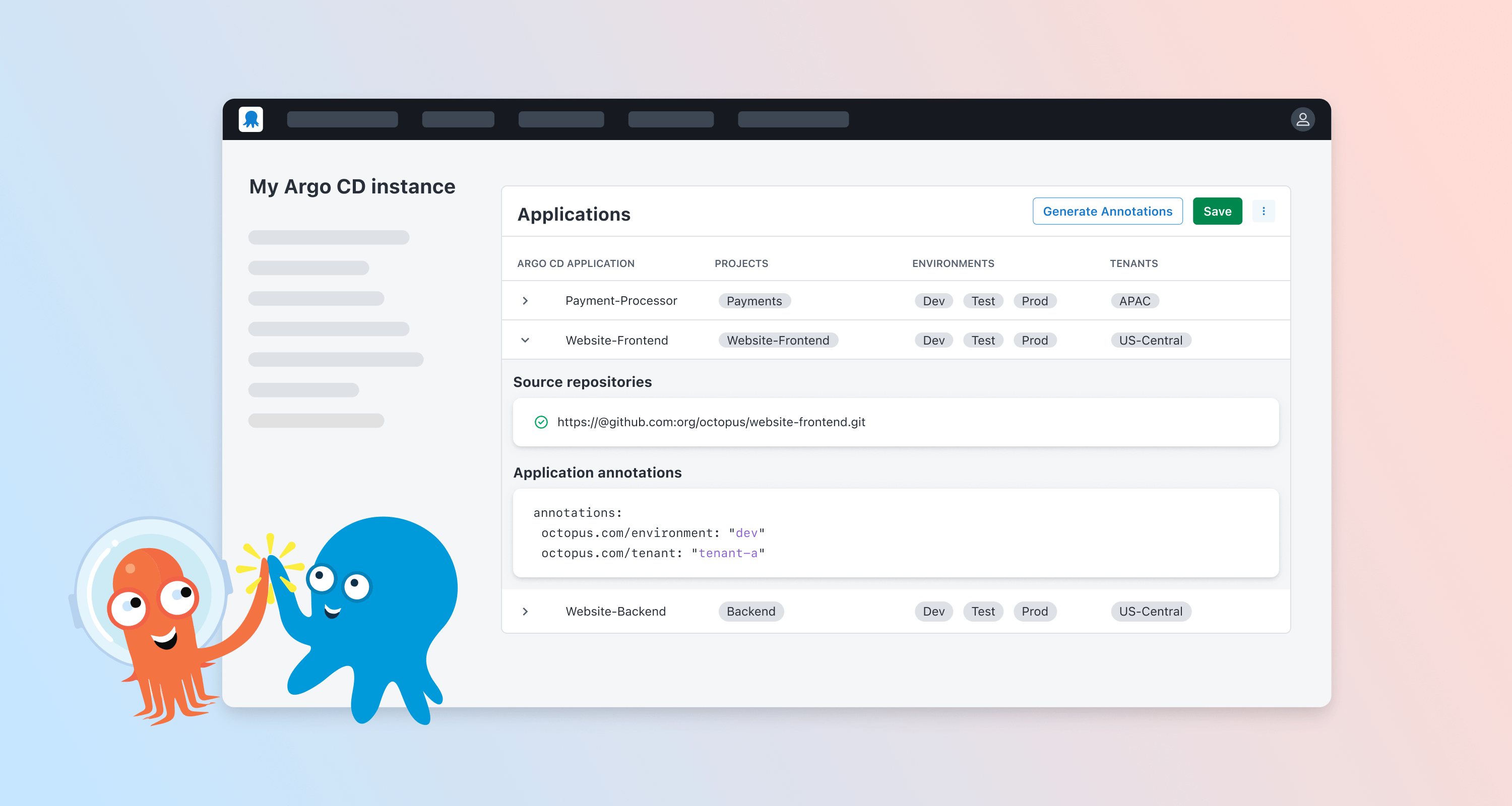Deploying AWS Lambda functions can be simple, ranging from quick CLI commands to complete infrastructure as code pipelines. That is until you need to do it reliably across multiple environments, with visibility, auditability, and a team of developers involved.
In this post, I share some strong opinions on what a good Lambda deployment looks like. These are shaped by patterns we’ve seen work and how, through the Octopus AI Assistant, GenAI can get you started with these opinions in your own projects quicker.
Use S3 for your Lambda Code
You may have heard the term “build once, deploy often” as one of Octopus’ core opinions on software deployment. It’ll likely come as little surprise that we think the same is true for a Lambda deployment. Instead of relying on external tools (like the aws lambda CLI), we recommend uploading your function application to an S3 storage bucket and referencing it in your deployment templates. This offers some key advantages:
- Uploading a versioned deployment artifact (zip) keeps your deployment reproducible — you’re consistently deploying the same tested artifact, not whatever is built manually.
- Using S3 avoids the AWS CLI’s
50MBdirect upload limit for Lambda code, which can block larger functions from deploying cleanly. - Promoting code across environments is simpler when the artifact doesn’t change between stages.
- S3-based deployments allow greater flexibility in integrating with CI/CD pipelines. You can have your build process push artifacts to S3 once, or you can have the deployment pipeline upload them to S3.
Deploy with SAM and CloudFormation
Defining your function and supporting resources in an AWS SAM template and using it as the foundation for your Lambda deployment provides a more scalable and repeatable approach compared to other methods:
- AWS SAM templates provide a simplified syntax that makes defining Lambda functions, supporting resources, and permissions much easier than writing a large CloudFormation template.
- SAM templates are just an extension of AWS CloudFormation, so you still get the reliability and auditability of the CloudFormation engine: Stack events, change sets, and rollback protection are all included.
- SAM supports AWS best practices, like the logical separation of resources, environment variables, and IAM controls scoped to the Lambda function, which encourages a secure application architecture.
These advantages make SAM more than just a template format. It’s a toolkit for building and deploying serverless applications. For example, here’s an example SAM file you can use to deploy a Lambda function using the Java runtime:
AWSTemplateFormatVersion: '2010-09-09'
Transform: AWS::Serverless-2016-10-31
Description: AWS Serverless Quarkus - quarkus-amazon-lambda-common-deployment
Globals:
Api:
EndpointConfiguration: REGIONAL
BinaryMediaTypes:
- "*/*"
Resources:
Test:
Type: AWS::Serverless::Function
Properties:
Handler: io.quarkus.amazon.lambda.runtime.QuarkusStreamHandler::handleRequest
Runtime: java17
CodeUri: function.zip
MemorySize: 256
Timeout: 15
Policies: AWSLambdaBasicExecutionRoleAfter you upload your function to S3, simply change the path to the CodeUri property above to the S3 bucket location, and deploy the template.
Octopus supports replacing YAML properties at deployment time using the structured configuration variables feature.
Lock down your Lambda
When deploying with AWS SAM, you gain built-in support for security best practices, but you still have to apply them. Here are some practical ways to secure your Lambda functions using SAM:
-
Use IAM roles of least privilege: Define fine-grained IAM policies using SAM’s
PoliciesorRoleproperties. Avoid the use of overly broad policies. Instead, use AWS-managed policies likeAWSLambdaBasicExecutionRoleor, where you need more control, create custom policies that grant the minimum necessary permissions your function needs. -
Manage secrets securely: Instead of hardcoding, reference secrets from core AWS services, like Systems Manager Parameter Store or Secrets Manager, directly in your SAM template.
-
Integrate security scanning in CI/CD: Before deployment, tools like cfn-nag or Checkov can be used to (statically) scan your SAM templates for misconfigurations and highlight any insecure approaches. Once your application has been deployed, use tools like Trivy to scan any SBOM files for vulnerabilities.
Accelerate your Lambda projects with GenAI
With the Octopus AI Assistant, you can speed up your AWS Lambda function deployments. Using the Prompt-based project creation functionality, you can write a prompt like:
Create an AWS Lambda Project called “Fast-track SAM” in the project group “AWS”
Octopus will generate a fully structured sample project for AWS Lambda deployments. This ensures your project contains the best practices discussed here, right from the start.
Conclusion
Building good AWS Lambda deployments is more than zipping code and pushing it to the cloud. By using S3 for deployment artifacts, SAM for deployment management, enforcing strong security practices, and using Octopus’ GenAI assistant, your team can move faster without sacrificing quality or control.
Happy deployments!






